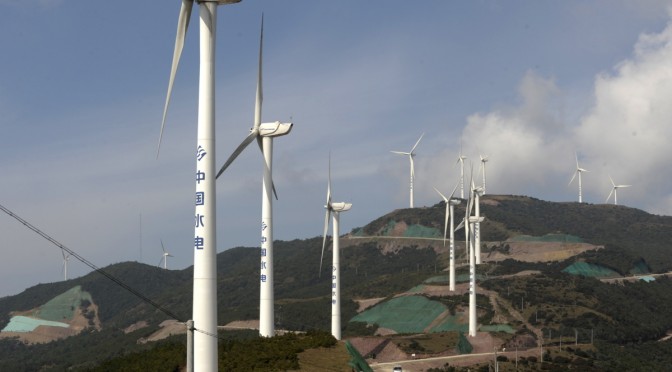China’s demand for energy is unparalleled.
The demand is met primarily with traditional raw materials such as oil, gas and above all, coal – the basis for 80 percent of China’s energy supply.
The trouble is, the process of generating electricity through coal releases large quantities of CO2.
And it is becoming increasingly difficult to deliver gas and oil to the many trouble spots around the world.
While the Ukraine crisis has turned out well for China – because its fears that it would soon be unable to deal with the West has prompted Russia to begin selling gas to China at bargain prices – the Iraq crisis is different. Now that the terror group IS has seized control of large swathes of the country, the region is increasingly destabilized. With China currently the biggest buyer of oil from the Middle East, it has reason to worry about its supply.
Beijing will be relieved that at least one of its projects is progressing well. Years ago, the Chinese government decided to boost the renewables industry. Now, two years earlier than planned, China is drawing 30 percent of its energy needs from hydropower, solar and wind power. Clean energy makes up the same percentage of the German energy market. And it seems likely that China will overtake it as the world’s green energy champion this year.
The statistics speak for themselves. China can now produce 378 gigawatts of clean energy – twice as much as the US, which produces 172 gigawatts, and four times as much as Germany, which produces 82 gigawatts. The industry is flourishing, and Beijing has adjusted its targets upwards for 2017. It is now aiming to bolster its renewable energy capacity to 550 gigawatts.
But Beijing should not start congratulating itself too soon. There are still a number of lingering problems, such as the fact that hydropower still makes up nearly two-thirds of China’s clean energy supply.
Moreover, capacities are not yet exhausted. This year, construction will be completed on the 300-meter high (984-foot) Jinping 1 dam, the tallest in the world, and capable of producing 3,600 megawatts of electricity.
It’s a controversial project, because most of the water used for energy generation is drawn from rivers whose source is in the Himalayas. Rising temperatures in the mountains and the melt of glaciers will lead to falling river levels downstream and a drop in reservoir water levels. China’s neighbors, which are also dependent on river flow from the Himalayas, are already complaining.
A challenge for Germany
The result could be a serious political bone of contention. Beijing is under pressure to take its focus off hydropower and boost solar and wind energy instead. Ultimately, there is little point in reducing reliance on the Middle East only to fan the flames of a crisis on the doorstep.
But the West shouldn’t rest on its laurels. Germany’s shift to renewables might be on a par with China’s for the time being, but it needs to remain on its toes if it doesn’t want to be left standing at the post by China in the clean technology race.
Slowly but surely, the realization is dawning on Beijing that, were the clean energy revolution to fail, China’s economic development would be undone in one fell swoop. After all, China is not only a world leader in clean energy but also in environmental damage and pollution. This is a reputation that Beijing would like to shed. But that will take time. Growth comes at a price.
DW columnist Frank Sieren has lived in Beijing for 20 years
http://www.dw.de


